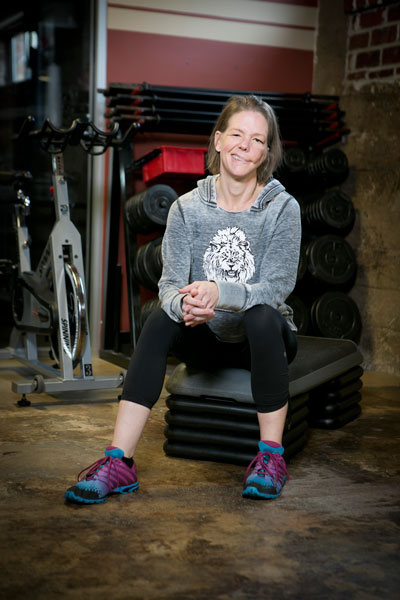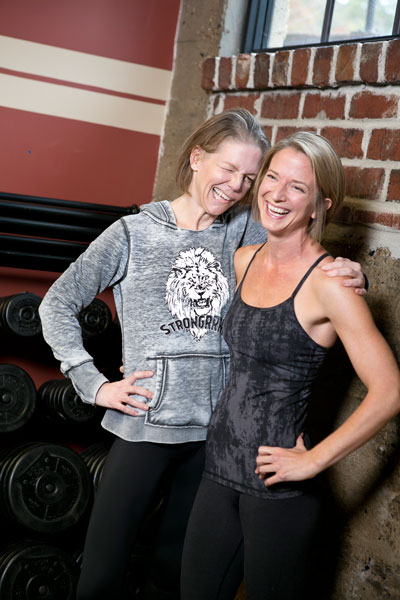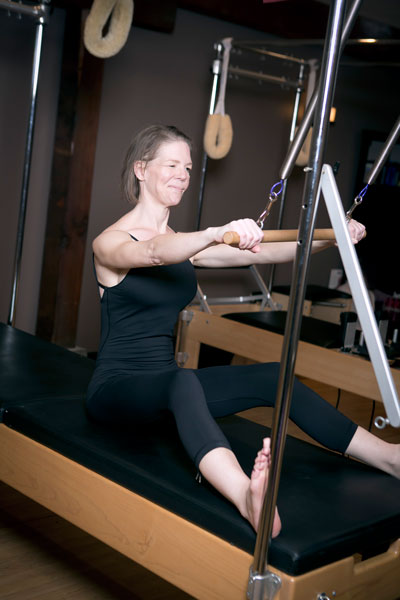Joy In Movement
After a devastating MS diagnosis, Teresa Mees found a reason and drive to move forward and become whole and healthy again.
 I was never a natural runner. I tried, though. With my terrible form, lack of endurance and laughable speed, running hurt. I thought it was supposed to hurt. I always thought that exercise had to hurt to be effective.
I was never a natural runner. I tried, though. With my terrible form, lack of endurance and laughable speed, running hurt. I thought it was supposed to hurt. I always thought that exercise had to hurt to be effective.
I started running because I was 25 pounds overweight and was determined to run it off. Reluctantly, I turned myself into a runner, gradually working up to a few miles a day five times a week. And it wasn’t all bad; after a largely sedentary adult life, I discovered a new freedom and found some joy in movement. I lost weight and was in better athletic condition than I could remember.
Imagine my confusion, then, when I was out for a run one summer day and found myself sprawled on the shoulder of a rural Iowa highway. For no apparent reason, I had fallen. I looked at the cornfields spinning around me, pushed up to my numb legs and, brushing the gravel from my bleeding knees and hands, tried to quiet the vertigo and roaring in my head. When I took a step toward home, my legs felt cemented to the ground. I could barely move.
‘Push through the pain’
 That was my first running fall, eight years ago. Although I didn’t acknowledge them, the symptoms of that initial fall continued: shuffling, numb feet, dizziness, and unreasonable exhaustion. I stopped running outside, wanting the safety of treadmill handrails. Even this didn’t stop me from falling occasionally.
That was my first running fall, eight years ago. Although I didn’t acknowledge them, the symptoms of that initial fall continued: shuffling, numb feet, dizziness, and unreasonable exhaustion. I stopped running outside, wanting the safety of treadmill handrails. Even this didn’t stop me from falling occasionally.
“Push through the pain,” we are told as athletes. My body was telling me that something was very wrong. But I separated my mind and body and couldn’t hear the signals my body was sending. In the name of improving my body, I continued to hurt it for several more years.
By June 2009, I couldn’t push anymore. My speech had become slurred. I couldn’t write or even type. I had searing, uncontrollable pain in the left side of my face and left arm. I couldn’t lift my left leg from the ground. Sleeping 16 hours a day, I was so lifeless that I could only lie on the sofa even when I was awake.
That’s when I was diagnosed with multiple sclerosis.
“Stop moving.” This is what MS tells our bodies and souls. Physically, this looks like canes and walkers and wheelchairs. But it stops us in many other ways the rest of the world doesn’t see. We have muscle spasms and nerve pain that make even small movements horribly painful. It can blind us. It slows our minds with confusion, fatigue and even dementia. And depression, fear and grief nearly stop our hearts.
Immediately, though, I understood that I didn’t have to stop moving. I was sad and scared, a shell of myself. But having survived medical trauma as a child, I knew it was possible to have MS and be whole and healthy. I just wasn’t quite sure how.
I started two weeks after diagnosis, slowly limping along on a treadmill at the gym for 10 or 15 minutes. Encouraged by this small routine, I tried yoga. Embarrassed initially by my poor body control, I improved my stability, especially on the days I paid close attention to even my smallest movements.
Then I added Pilates to my routine. My MS symptoms had started to go into remission, and the concentrated awareness and strengthening of Pilates allowed me to address the imbalances MS left behind. When my body wouldn’t do what I wanted it to do, I found exercises to address those weaknesses. I became balanced and coordinated. As I understood what a powerful tool Pilates had been in my overall recovery, I began intensive study to become a Pilates teacher.
‘I never needed to run’
 In the months following my diagnosis, as my husband and I struggled to absorb the emotional impact of our lives veering drastically off course, yoga taught me to be grateful for what I could do rather than critical of what I couldn’t do. Pilates taught me to carefully search inside myself and find the parts of my body that did still work and to strengthen those instead of grieving what I thought I had lost. I found that I didn’t hate MS; I was learning to live a full life with it.
In the months following my diagnosis, as my husband and I struggled to absorb the emotional impact of our lives veering drastically off course, yoga taught me to be grateful for what I could do rather than critical of what I couldn’t do. Pilates taught me to carefully search inside myself and find the parts of my body that did still work and to strengthen those instead of grieving what I thought I had lost. I found that I didn’t hate MS; I was learning to live a full life with it.
And for the first time, I was exercising to take care of myself. Using the principles of self-awareness, gratitude for my abilities and self-forgiveness, I added new forms of exercise to my routine. And I quickly grew stronger than I had been before I had gotten MS. I was learning that strength is a natural outcome of being kind to oneself.
That is probably enough of a story. But it doesn’t end there. I was diagnosed with breast cancer a year ago. After double mastectomies and reconstructive surgeries, my movement was severely restricted. Recovery was long and painful. On many days I felt betrayed by my body. But in the end, my surgeon said that my recovery was the fastest he has seen, despite MS, because of the condition of my body and my positive and pragmatic attitude.
It’s important to understand that I have days when I can’t work out because of fatigue or depression and that I have days when I wish none of this had happened. I have times when I fear for the future. But on most days, I understand that I am truly lucky to live this life in this body.
I know I will never run again. But I also know what I didn’t know a decade ago: I never needed to run; punishing myself did not make me healthier. Through the extremes of my circumstances, I have learned to love the imperfections in my body. And that has motivated me to care for myself in a way that has made me honestly and profoundly stronger — physically and emotionally — than I have ever been in my life.
And if there’s one lesson that others take from my story, I hope that is it. Embrace yourself and what life has given you, and let the joy and strength grow from there.


